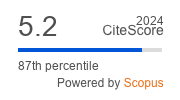Article | Open Access
The Impact of Multilevel Governmental Policy on Rural Catalonia: Voices From the Grassroots
| Views: | 1480 | | | Downloads: | 1664 |
Abstract: One decade on from the launch of the European Youth Guarantee Initiative, there is still limited research into its efficacy in rural areas. In Spain, a country with significant urban-rural disparity, the complexity of the governmental structure across the country has made investigations into the effectiveness of youth employment strategies less common as compared with other European states. Our study analyses the meso-level structure of the Spanish government and how the Public Employment Services (PES) factor into the overall process of disseminating active labour market policies across the country. The study is based in the autonomous community of Catalonia and includes a case study in the region of Lleida. Through open-ended interviews with members at different levels of the local PES, including the director and various other staff, as well as with local policymakers, youth workers in local organisations, and the youth themselves, we aim to shed light on how the Youth Guarantee is being implemented on the ground. This will take into account the structural constraints, needs, and challenges under the new law as expressed by the various stakeholders. The results indicate that both youth and local PES are negatively impacted by some centralised aspects of employment policy, such as the stringent requirements for training courses that prove prohibitive for rural areas, as well as the urban-centric design of training courses. Further, the youth collectively express a strong desire for their voice to find expression in the design of active labour market policies.
Keywords: halfway federal state; multilevel governance; rural NEET youth; rural policy framework; Spanish youth unemployment; top‐down government; urban‐rural disparity; urban‐rural gap
Published:
© Omeed Agahi, Maria Isabel Pell Dempere, Jordi Feu, Eduard Carrera, Òscar Prieto-Flores. This is an open access article distributed under the terms of the Creative Commons Attribution 4.0 license (http://creativecommons.org/licenses/by/4.0), which permits any use, distribution, and reproduction of the work without further permission provided the original author(s) and source are credited.


